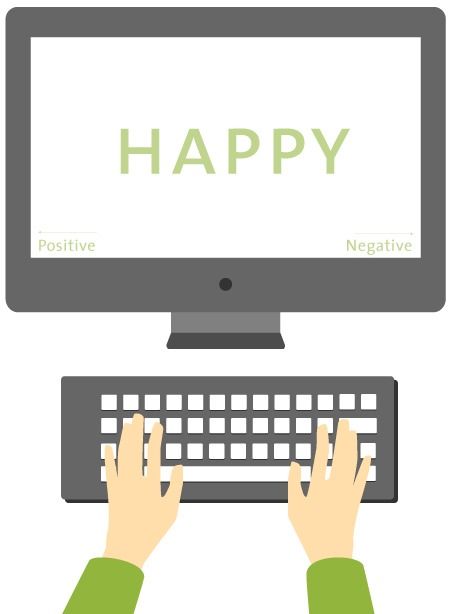How to study human behavior
Many people are fascinated by human behavior. Why do we act the way we do? How is our behavior influenced, or measured? And why is behavioral change so difficult?
Posted by
Published on
Fri 24 Mar. 2023
Topics
| Behavioral Psychology | Behavioral Research | Consumer Behavior | Data Integration | FaceReader | Observational Research | Psychology | UX Research | UX | Video Observation | Viso | Measuring Behavior | The Observer XT |

How to study human behavior
Many people are fascinated by human behavior. Why do we act the way we do? How is our behavior influenced, or measured? And why is behavioral change so difficult?
In this blog post, we describe several behavioral theories, as well as different ways to measure human behavior. Lastly, we discuss research fields in which human behavior analysis plays a central role, like psychology, health care, education, and consumer research.
Table of contents
Perspectives on behavior
Influenced by prominent thinkers like John B. Watson and B.F. Skinner, behavioral psychology gained popularity between 1920 and 1950. With its focus on observable behavior instead of mental states, behaviorism provided a systematic way to study human behavior.
Behaviorism: it’s the environment
Behaviorists argue that behavior is learned in interaction with our environment, and that all behaviors are learned through experience. Behavior analysis is the scientific approach to understanding behavior and how it is influenced by environmental factors. It is based on the principles of behaviorism, which emphasizes the role of the environment in shaping behavior.
Behavior analysts focus on identifying the antecedents (what happens before behavior occurs) and consequences (what happens after behavior occurs) that influence behavior, and then use this information to develop interventions that can change behavior.
Two key principles that are involved in new behavior are classical and operant conditioning.
In classical conditioning, something new is paired with something that occurs naturally. After a while, this new stimulus triggers the same reaction as the original stimulus, resulting in a new association. A famous example of this principle is found in Ivan Pavlov’s research.
What is classical conditioning?
In his experiments with dogs, Pavlov paired the sound of a bell (new stimulus) with the presentation of food (naturally occurring stimulus). Eventually, the dogs started salivating when hearing the bell, even when no food was presented (new association). And voilà, new behavior is learned.
What is operant conditioning?
The second learning principle, operant conditioning, describes the way our behavior is shaped by consequences. Specifically, it states that reward and punishment can influence the likelihood that behaviors occur again.
Think about how you praise a child when she eats her vegetables, or how you might take away a favorite toy when she’s mean to her brother. In both cases, you provide her with a consequence for her behavior. Chances are, she’ll eat her vegetables next time as well, and will think twice about teasing her brother.
These methods explain much of how human behavior is shaped. However, critics argue that behaviorism fails to take into account important factors like free will, internal influences, and other types of learning. In the next paragraphs, we will explore two other behavioral theories.
Social learning theory: it’s other people
Social learning theory was proposed in the 1970’s by Albert Bandura, who believed that conditioning alone could not account for all behaviors. At its core, social learning theory proposes that people learn from observing others.
This observational learning does not only occur when observing another person, but also when listening to descriptions of behavior or viewing symbolic models. From very early on, this provides us with many learning opportunities.
Importantly, social learning theory emphasizes that behavior is also influenced by mental states, like motivation or thoughts.
Another difference with behaviorism is that observational learning does not necessarily lead to permanent behavioral changes. In other words, people might learn new information without actually showing new behaviors.
So far, we’ve established that human behavior can be shaped through experience and observation. A third method of learning behavior is described by Relational Frame Theory.

Relational Frame Theory: it’s our language
Relational Frame Theory (RFT) was developed in the 2000’s by Steven Hayes, Dermot Barnes-Holmes and Brian Roche, and builds upon classic behaviorism. What’s new in this theory is the role of human language in learning new behavior.
Specifically, RFT researchers argue that language enables us to learn new information indirectly. The key learning processes of this theory are centered on relations between stimuli, or relational frames.
An example
As an example, imagine you meet three new people: Aaron, Bianca and Chris. Aaron introduces himself to you, and explains that Bianca is his sister and Chris is his father. Importantly, with these relations learned directly (B-A, C-A), you now know several other relations indirectly.
First, you can derive that Aaron is Bianca’s brother (A-B) and Chris’ son (A-C). This is called ‘mutual entailment’ in RFT. But you can also understand that Bianca is Chris’ daughter (B-C) and that Chris is Bianca’s father (C-B), which is referred to as ‘combinatorial mutual entailment’.
Even though these relations may seem obvious, the example shows that we can learn indirectly, through relations or frames we already know. The more relations we know, the more relations we can derive. And, like social learning theory, it shows that we don’t need actual experience to learn new information.
Why is changing behavior difficult?
As you might know from personal experience, changing behavior can be difficult. Maybe you have tried to exercise more or to eat more healthy foods, only to find yourself back to your old habits one week later.
Why is behavioral change so difficult? And what can you do to succeed anyway?
First, it is important to know that about 95% of our behavior is driven by unconscious processes. It would simply take too much mental energy to be aware of all our behaviors. So instead, most of it becomes automatic, part of our habits.
Second, behaviorism has taught us that the environment, through associations and consequences, shapes our behaviors. So let’s examine the consequences of a behavior we want to change.
To return to our previous example, imagine that you want to exercise more often. What are the consequences of that behavior? More energy, better health, slimmer body. Sounds good, right? But to get there, you have to work out, sweat, and skip comfortable hours on the couch.

Do you notice the difference between these consequences, specifically in their timing? The unpleasant consequences come immediately, while you have to persevere for weeks or even months until you can experience the pleasant consequences of your behavior.
If consequences drive our behavior, it’s not surprising that the immediate, visible rewards win over the long-term, abstract ones. And if we’re not aware of 95% of our behaviors, how can we expect to change them? Luckily, we can also use these principles to our advantage.
Behavioral change
A powerful way to make use of our automatic behaviors is through habit stacking. Basically, this means that you take an existing habit, and then add a new behavior to it. For example, when you regularly forget to take your medicine, you ‘stack’ this behavior on top of a habit you have already mastered, like brushing your teeth in the morning.
By making a new behavior part of an automatic routine, you are more likely to stick with it. The beauty of it is that you can keep stacking on new behaviors, once a new behavior has become a habit of itself.
The power of consequences
You can also harness the power of consequences, by creating ways to make the short-term consequences of your desired behavior more positive, while making the short-term consequences of procrastination more costly.
For example, you can reward yourself each time you eat a healthy meal. Simply praising yourself for each step in the right direction can make a difference, as can actively imagining the long-term benefits of your behavior. And if you want to make the consequences of procrastination more costly, you can try teaming up with a buddy, making your intentions public, or putting an expensive bet on your behavior.
Change your environment
Another important step you can take is changing your environment. If your TV is on and your sports clothes are in the attic, it’s much easier to lounge on the couch than it is to start your workout. Instead, unplug the TV and keep everything you need to start exercising in sight.
Principles like these are also used in (cognitive) behavioral therapy. With the help of a therapist, behaviors involved in anxiety, depression, addictions or other mental disorders are examined and changed gradually. To provide people with the best care possible, accurate measurements and continued research of behavior are essential.
Qualitative versus quantitative research
To measure human behavior, all kinds of research instruments are at our disposal. These instruments can be divided into qualitative measurements and quantitative measurements. What is the difference between qualitative and quantitave research? Let us explore this further.

What is qualitative research?
Qualitative measurements help researchers to understand human behavior on a deeper level by studying underlying reasons, opinions, and motivations. Usually it is used for exploratory research. They are particularly helpful in understanding the context of phenomena, and how they affect individuals and groups. It is all about the details. It seeks to explain ‘how’ and ‘why’ people behave as they do.
Methods to measure qualitative data
The sample size in this type of research is typically small since it’s hugely labor intensive. Methods to measure qualitative data are for example in-depth interviews, focus group interviews, behavioral observations, and unstructured questionnaires using open-ended questions. Preferably, qualitative research is conducted in a natural setting.
What is quantitative research?
On the other hand, quantitative measurements are used to quantify preferences, opinions, facts, behaviors, and other defined variables – and generalize results from a larger sample population. It is used to answer questions such as “How many?”, “How often?”, “How much?” of which the answers are expressed with numbers. You can statistically analyze the collected data. Methods to collect this data are e.g. surveys, structured questionnaires, and online polls, using close-ended questions.
Combining qualitative and quantitative data
The overall purpose of research is discovering the truth. However, “without good data, you’re just guessing.” Combining qualitative data with quantitative data will provide researchers in-depth information about a certain behavior, and various aspects of that behavior. The two different approaches complement each other, while the shortfalls of each will be balanced.
Read more: Examples of Human Behavior Research
Observation
A very important part of studying human behavior is performing observations. What better way to explain someone's behavior than by observing that person? How is your test participant interacting with a child, a patient, or computer?
Observational research
Observational research is typically performed in one’s home, workplace, or a specially designed observation lab. The best way to observe one's true behavior is unobtrusively. With a one-way-mirror, it is possible to watch every move of your subject, without being physically present in the room. By using The Observer XT, you can annotate all of the behaviors of interest and perform analysis, turning qualitative data into quantitative data.
Video observations are also a great way to study human behavior. The use of video greatly expands the scope of any research project. Annotating from video allows you to make frame-accurate descriptions of behavior. Viso is an ideal solution for high quality recording of video and audio in multiple rooms, and provides the video material needed to gain insights into processes, human performance, and communication.
Observing behavior in the brain
Another way of observing one's behavior is by looking at the inside, more specifically: by looking at their brain. As we are not conscious of most of the processes that happen on the inside, looking into brain activities can give new insights into the behavior of people.
We can observe correlations between behavior and brain activity, for example when studying an injured brain and the influence this has on a patient. In some cases, brain evidence helps to resolve puzzles that psychologists have wrestled with for decades.
Physiological measures
Although your test participant may appear to be calm, he or she may be concealing a substantial amount of stress. To reveal this level of stress, you can combine behavioral coding with physiological measurements acquired with a data acquisition system.
This allows you to simultaneously acquire physiological data, such as EEG, ECG, EMG, blood pressure, skin conductance, and facial expressions, while you are collecting observational data. For example, skin conductance is a method of measuring the electrical conductance of the skin, used as an indication of psychological or physiological arousal. EEG makes it possible to include neuronal activity during a test, while FaceReader captures the facial expressions. These measurements make it possible to study the interplay of physiology and behavior, caused by an external event.
Multimodal research made easy
Combining multiple types of measurements can be demanding, especially when using acquisition tools from different manufacturers that have to be calibrated, started, and synchronized. Straightforward yet powerful is NoldusHub, an all-in-one research platform for human behavior studies.
This brand-new software suite was specifically designed to will streamline multimodal research from start to finish, and take the hassle out of measuring multiple modalities with a range of devices at the same time. By doing so, researchers are able to get high-quality data and a more comprehensive understanding of human behavior.

From setting up to connecting all devices, from recording to visualizing in a clear way, NoldusHub makes multimodal research easy
Implicit measures
While questionnaires can be useful in capturing opinions, personality traits, or (mental) health issues, they also have some limitations.
One important issue is that people can be biased in their responses. We tend to give answers that are socially desirable, we are influenced by an experimental setting, or we answer all questions a certain way (mostly extreme or neutral, mostly ‘yes’ or ‘no’).
Also, we’re not always aware of what we think, feel or do. As we mentioned earlier in this blog, about 95% of our behavior is unconscious and automatic. Some information about ourselves might escape our attention.
With these limitations in mind, researchers developed measures to capture our unconscious opinions, emotions and behaviors. These implicit tests require people to respond very quickly to different stimuli. Differences in response times reflect how you really feel about something.
Basically you respond faster when you agree.
For example, a test might involve asking participants to sort words into categories that are on either side of a computer screen.

You’d have to choose left when encountering a positive word (‘good’, ‘happy’) or a picture of a cat. You’d choose the right side when seeing a negative word (‘bad’, ‘ugly’) or a picture of a dog. In another phase of the test, these pairings are reversed.
If you were to respond more quickly when ‘positive’ and ‘dogs’ are associated, compared to when ‘positive’ and ‘cats’ are, this suggests you have an implicit preference for dogs. Other implicit tests assess approach and avoidance behavior, attention biases, or relational frames.
Developmental psychology research
Developmental psychology is the scientific study of how and why humans change over the course of their life. Developmental psychologists aim to explain how thinking, feeling, and behaviors change throughout life.
Although developmental psychology involves the entire lifespan, researchers mostly focus on the period in which changes follow each other fast, from birth to early adulthood. They explore topics such as children’s basic understanding of the physical world, how children acquire language, how learning behaviors develop, and how they interact socially with other people, for example in parent-child interaction studies.
Ways to study development
The use of video greatly expands the scope of such a research project. It enables researchers to capture infants' behaviors and reactions while they perform a task, are exposed to a novel object, are playing with a sibling or peer, or are having a meal. Coding the videos, whether they are made at home or in a lab, enables you to review, visualize and analyze the behaviors quickly.
Baby FaceReader has been developed as a state of the art system to automatically detect infant facial expressions in order to help address questions in developmental psychology related to affect and developmental disorders such as Autism Spectrum Disorder (ASD).
Research helps us to understand what infants learn, what they are processing, and what factors are influencing the development. In another blog post, 5 examples of infant studies are highlighted.
Mental disorders
Understanding human behavior is essential in the prevention and treatment of mental disorders.
Mental disorders are defined as a combination of abnormal thoughts, emotions, and behaviors. Worldwide, millions of people suffer from disorders like depression, addiction, anxiety, and dementia.
Aside from a range of psychological and cognitive symptoms, people with mental disorders often experience problems in school, work, or family life as well.
Understanding mental disorders
With this variety in symptoms and contributing factors, research plays an important role in the further understanding of these disorders.
For example, recent studies examined the effectiveness of a game-based intervention in social anxiety, the best ways to observe pain expressions in dementia, doctors’ emotions during the treatment of depression, and the role of social cognition in the development of social anxiety.
Studies like these help to improve the prevention and treatment of mental disorders, and contribute to overall mental health.
Health care research
In the field of health care research, it is all about quality of life and consequently about quality of care. Wikipedia describes health-related quality of life as an assessment of how the individual's well-being may be affected over time by a disease, disability, or disorder. Health care professionals’ highest aim is to improve quality of life for their patients, by providing the best possible quality of care.
Various topics can be of interest for health care research, such as doctor-patient interaction, operating room layout, simulation training, team performance and communication, or dealing with emotions. All have an impact on the quality of care and thus life.
Using video technology
With help of Noldus solutions, researchers will gain the insight they need in processes, human performance, and communication. For example, the use of video technology offers important advantages to scientists in unraveling complex behavior patterns and finding relationships between behaviors, effectiveness of interventions, and more.
Education & training
Education is all about gaining knowledge about facts, events, values, beliefs, general concepts, principles, etc. to students. On the other hand, training is a way to develop skills, rather than just know about something. Training is based on practical application, it involves hands-on experience and helps people to implement a new system, improve a specific ability or further their ability in something.
Education and training can take place in a wide variety of fields, and in many different settings such as classrooms or skills labs. Theory can be put into practice in a safe and controlled environment.
Video feedback tool
More and more video feedback is used in education and training facilities. It continues to prove its effectiveness for both educators and students. By using video and audio recordings in education and training, students and educators can receive, and benefit from, direct feedback.
Classroom observations
To examine, for example, effective teaching and teacher-student interaction, classroom observations can be used as a technique to gain the desired insights. Using a software tool to observe the questions students ask, how the teacher reacts, and whether the teacher checks if the students understand his explanation, will make the research much easier. It enables to code behaviors accurately, record one or multiple videos, integrate data modalities, and explore the results.
User experience and human factors research
What happens with a person’s emotions and attitudes when using a particular product, website, application, or system? What does the user experience, and how does the user interact? Is it used in the way that it is meant to be used? Finding answers to these questions enables to optimize that particular product, website application, or system. To meet the needs of its users, to improve the user experience.
Tools to measure ease-of-use and efficiency
Feedback methodologies such as observation and task analysis will reveal the ease-of-use and efficiency of a product or service. While you observe the user of your product, you can receive direct feedback about your product.
To facilitate UX tests, you can record audio and video streams from digital cameras, capture the eye tracking gaze-overlay and emotions, and add notes or markers on the fly for quick lookback.
How to build a usability lab?
UX tests can be carried out in a usability lab, or on-site with a portable lab. It provides controlled conditions, and fully integrated equipment and software to make the tests as realistic as possible. A few examples are the Social Media Lab in Mons, Belgium, which connects with business and academics in order to better understand social media use and the digital world in general.
In the Human Factors and Ergonomics Laboratory of Zodiac Seats, participants were asked to evaluate six different travel pillows on head and neck support while sitting in an airplane seat and trying to rest or sleep.
In a study with bicyclists, researchers at VTI, the Swedish National Road and Transport Research Institute, observed cyclist behavior using eye tracking technology, video recordings, and behavioral coding. All data combined enabled them to assess whether the cyclists met the demands in specific situations.
Find here an overview of example labs.
Consumer behavior research
Getting to know your target audience is the best way to understand consumer choice behavior and preferences. How do consumers use a product? Why did they choose to buy that product in the first place? Did packaging or store layout have anything to do with that? Or did unconscious emotions play a role?
Recent studies aimed to answer several of these questions. Here, we list a few:
- The study of Eliza Kostyra and colleagues used face-reading technology in order to determine the effect of smoked ham samples on consumer emotion, which may lead to deeper insight on whether or not a consumer chooses to buy the sampled product.
- In France, a team of researchers designed a test kitchen including four dome cameras and one portable GoPro camera to investigate food storage processes.
- Researchers Torrico and Fuentes tried different implicit measurement techniques in order to get closer to measuring liking and preference using images and chocolates!
A more in-depth blog post about consumer behavior research can be found here: Understanding consumer buying behavior.
Ready to start studying human behavior?
We're happy to help
Book a meeting for an online or onsite session.
Together, we can discuss you research requirements and come up with the best solution!
References
- www.verywellmind.com/behavioral-psychology-4157183
- www.verywellmind.com/social-learning-theory-2795074
- contextualscience.org/what_is_rft
- jamesclear.com/habit-stacking
- jamesclear.com/time-inconsistency
- www.simplypsychology.org/qualitative-quantitative
- www.socialresearchmethods.net
- www.theclassroom.com/
- keydifferences.com/difference-between-training-and-education
- www.nextiva.com/blog/response-bias
- implicit.harvard.edu/implicit/iatdetails
- www.who.int/news-room/fact-sheets/detail/mental-disorders

Related Posts

Challenging play behavior: does it still exist?

Behavior and emotions of older adults
